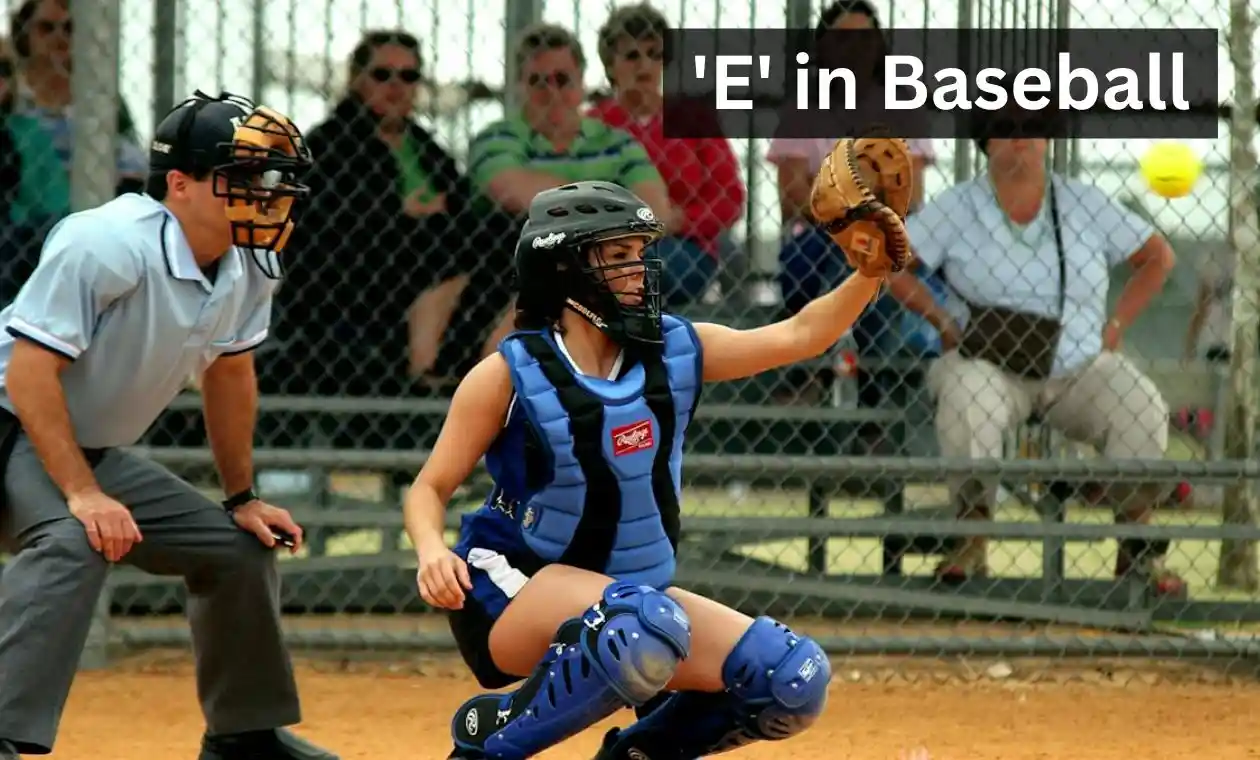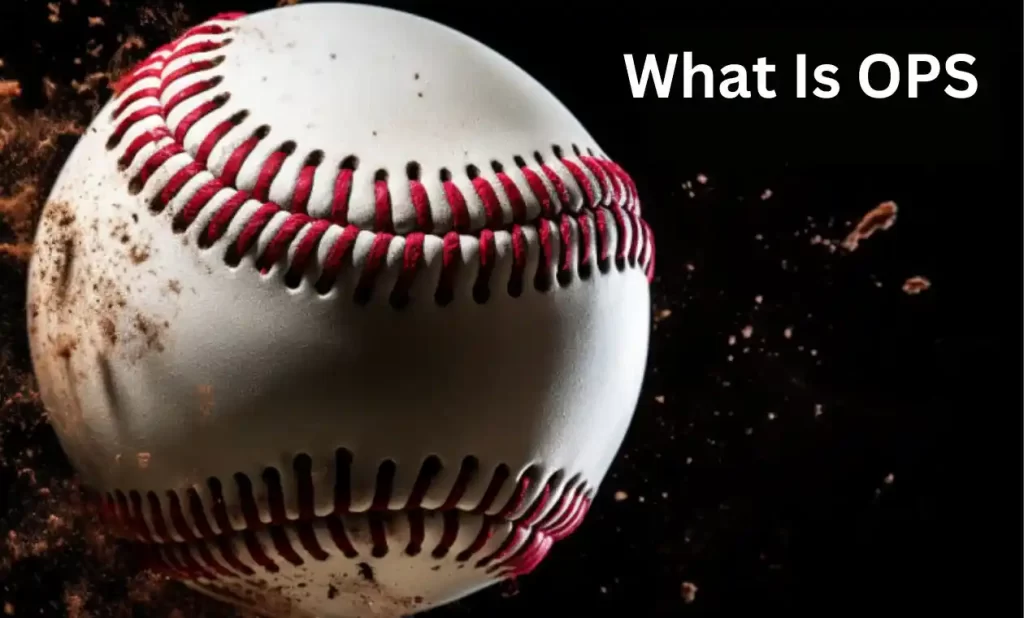
Welcome to the world of baseball, where the letter “E” carries significant weight. In this guide, we’ll unravel the mystery behind ‘E’ and delve into its crucial role on the field.
As any baseball enthusiast knows, errors can sway the course of a game. Understanding the implications of ‘E’ is not just for die-hard fans; it’s a key insight that opens the door to the dynamics of the sport. Join us as we explore the impact of errors and why they stand as pivotal moments in baseball strategy and performance.
Also Read: what is WRC+ in baseball
The Meaning of “E”
To comprehend the significance of ‘E’ in baseball, it’s crucial to grasp how official scorers interpret it. In the realm of the sport, an error is not merely a blip on the field; it’s a judgment rendered by those tasked with evaluating the gameplay. When a fielder makes a play that, in the eyes of the official scorer, deviates from what’s expected of a player of ordinary skill, the infamous ‘E’ is assigned.
The journey into the world of errors hinges on the actions of fielders. An error is not an arbitrary call; it stems from the misplaying of a ball. Picture this: a routine catch that slips through the fingers, a ground ball fumbled, or a pop-up left unattended. These are the instances where the fielder’s act deviates from the norm, leading to the assignment of the dreaded ‘E.’ In the intricate dance of baseball, understanding these nuances becomes a game-changer.
Impact of Errors
The repercussions of an ‘E’ ripple through the innings, creating a domino effect on the game’s progression. When a fielding mistake occurs, it’s not merely a blip on the radar—it’s an invitation for extended innings. The opposing team seizes extra opportunities, turning what could have been routine outs into prolonged offensive chances. As we explore the impact, bear in mind that minimizing errors becomes paramount to curtailing these extended innings.
Errors are not just statistical entries; they shape the ebb and flow of defensive momentum. Picture a game where flawless fielding dominates — it’s an orchestra of precise throws, caught fly balls, and strategic tags. On the flip side, errors disrupt this harmony. They dent the team’s defensive momentum and, in turn, influence overall performance. In the world of baseball, a seamless defense is not just a luxury; it’s a strategic necessity. Stay with us as we uncover why defensive finesse can make or break a team’s success.
Scoring Errors
Assigning Accountability to the Fielder
The essence of ‘E’ lies in accountability. When the official scorer marks an error, it’s not a random occurrence. Instead, it’s a meticulous evaluation of the fielder’s performance. Accountability falls squarely on the shoulders of the player who, in the eyes of the scorer, deviates from the expected standard. This section unravels the intricacies of fielder accountability in the face of errors, a critical aspect that defines the dynamics of baseball statistics.
Navigating the Maze of Official Scoring Rules
Behind every ‘E’ notation lies a set of rules that govern the official scoring process. These rules act as the compass, guiding scorers through the maze of baseball intricacies. Understanding how a misplayed ball translates into an error involves dissecting these regulations. We’ll navigate this maze together, shedding light on the specific situations defined by the official scoring rules. It’s not just about errors; it’s about deciphering the code that underlines the scorer’s judgment. Stick with us as we demystify the rules that shape the narrative of errors in baseball.
Also Read: Ernie Banks and his impact
Importance of Errorless Baseball
In the realm of baseball, the mantra of ‘Defense wins games’ echoes with resounding truth. Every error, like a crack in armor, weakens the defensive stronghold. This section delves into why maintaining errorless baseball is not merely an aspiration but a necessity for building and sustaining a robust defense. Each error, a chink in the armor, compromises the team’s ability to thwart offensive onslaughts. By understanding the critical role of error-free play, we unravel the keys to fortifying the defensive front.
Beyond the individual plays, errors weave a narrative that influences the broader context of team success. A team that commits fewer errors is akin to a well-oiled machine—efficient, precise, and poised for victory. Errors disrupt the flow, providing the opposing team with unearned opportunities. Join us in exploring the intricate connection between errorless baseball and overall team success. It’s not just about avoiding mistakes; it’s about sculpting a path to triumph through defensive excellence. Stay with us as we unravel the symbiotic relationship between error reduction and the journey to victory in baseball.
Examples of Errors
Dropped Fly Balls
Let’s zoom in on the scenarios that result in an outfielder’s heart sinking—the dropped fly balls. When a routine pop-up transforms into a missed opportunity, the ‘E’ makes its appearance. Picture the outfielder, eyes fixed on the descending ball, and then, in an instant, it slips through the grasp. This error, a testament to the fine line between a secure catch and an extended inning, paints a vivid picture of the repercussions of fielding missteps.
Wild Throws and Misjudged Ground Balls
The ‘E’ extends its reach to the infield, where wild throws and misjudged ground balls become the protagonists of defensive mishaps. An infielder’s throw astray or a ground ball misjudged can tip the scales, allowing baserunners to advance or score. As we dissect these instances, it becomes clear that errors aren’t confined to a single position; they permeate the diamond, making every defensive play a potential turning point.
Collisions with Teammates
In the chaos of a close play, teammates converging can be a spectacle of coordination or a recipe for disaster. Collisions between fielders in pursuit of a ball or a tag gone awry fall into the realm of errors. The unexpected clash not only results in defensive lapses but also exemplifies the delicate balance required for flawless execution on the field. Join us in exploring how even the most coordinated teams can find themselves grappling with errors in the heat of the game.
Impact on Individual Players
Delving into the world of errors shines a spotlight on individual players and their defensive prowess. Defensive statistics, including the number of errors committed, serve as a tangible record of a player’s fielding performance. Each ‘E’ notation becomes a statistical entry, creating a track record that mirrors a player’s ability to execute defensive plays flawlessly. Join us as we explore how defensive statistics paint a vivid picture of a player’s contributions and areas for improvement.
Beyond the numbers, errors cast a shadow on a player’s overall value. In the evaluation of a baseball player, defensive capabilities weigh heavily on the scales. A player who consistently minimizes errors is an asset, contributing not only to the team’s defensive stability but also enhancing their overall value. This section unravels the intricate relationship between error reduction, a player’s defensive acumen, and their broader impact on the team. Stay with us as we navigate the landscape where individual excellence and team success intersect in the realm of baseball.
Also Read: Ultimate Guide to walk-off wins
In Crux
As we wrap up our journey through the world of ‘E’ in baseball, let’s recap the key points that define its significance. From the meticulous judgments of official scorers to the far-reaching impact on team dynamics, errors aren’t just blips on the field but pivotal moments that shape the course of the game.
In the pursuit of baseball excellence, one theme resounds clearly—minimizing errors is the linchpin to success. Whether it’s avoiding dropped fly balls, executing precise throws, or maintaining defensive composure, every player’s commitment to errorless play contributes to the collective strength of the team.
Our exploration into the realm of ‘E’ underscores the strategic importance of error reduction. It’s not just a statistical endeavor; it’s a commitment to defensive excellence, a pursuit that elevates individual players and propels teams toward victory. As you step into the world of baseball, armed with a deeper understanding of errors, remember: the path to triumph begins with a commitment to flawless execution on the field. Thank you for joining us on this journey into the heart of baseball intricacies.

Meet Daniel Anderson, the heart and soul behind Baseball Pro Picks. At 49, Daniel’s life has revolved around baseball, a passion that’s as strong today as it was when he first fell in love with the game. Living in the USA, Daniel has dedicated countless hours to watching, analyzing, and understanding every pitch, hit, and home run, making almost no game missed. His deep-rooted love for the sport is matched only by his commitment to sharing insightful, expert analysis with fellow baseball enthusiasts. With decades of experience and a keen eye for the game’s nuances, Daniel brings a unique perspective that enriches Baseball Pro Picks. Trust Daniel to guide you through the intricacies of baseball with the authority and trustworthiness of a true aficionado.












